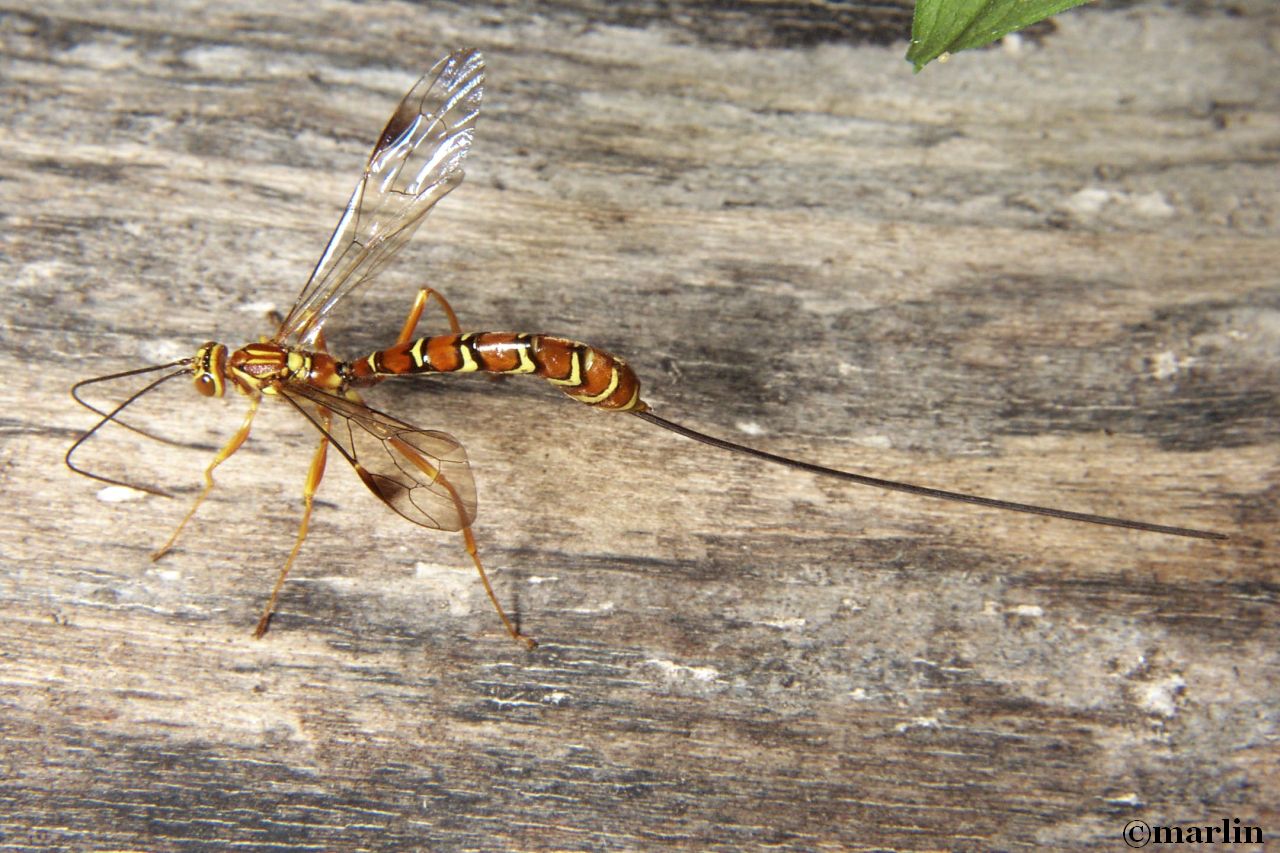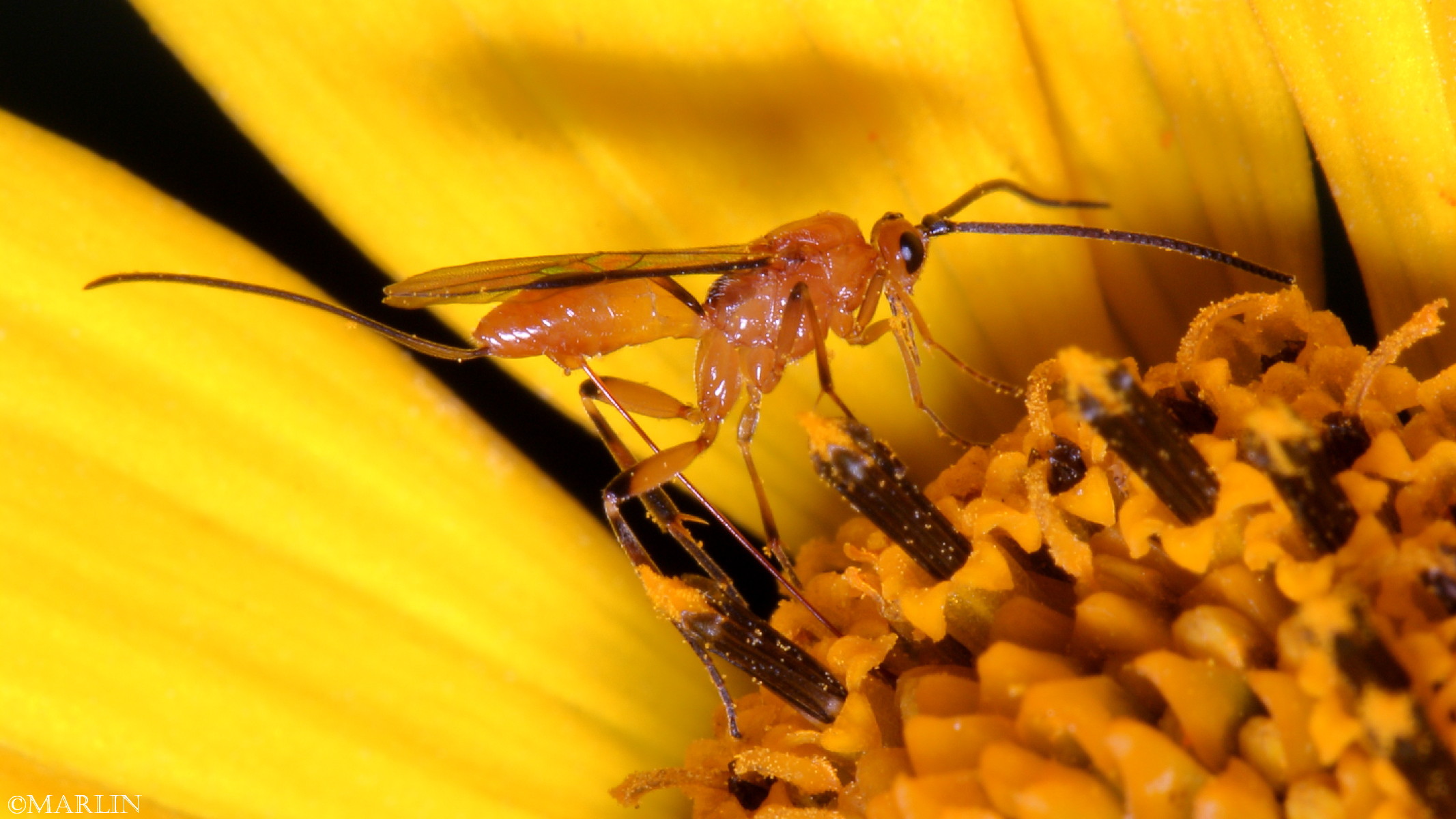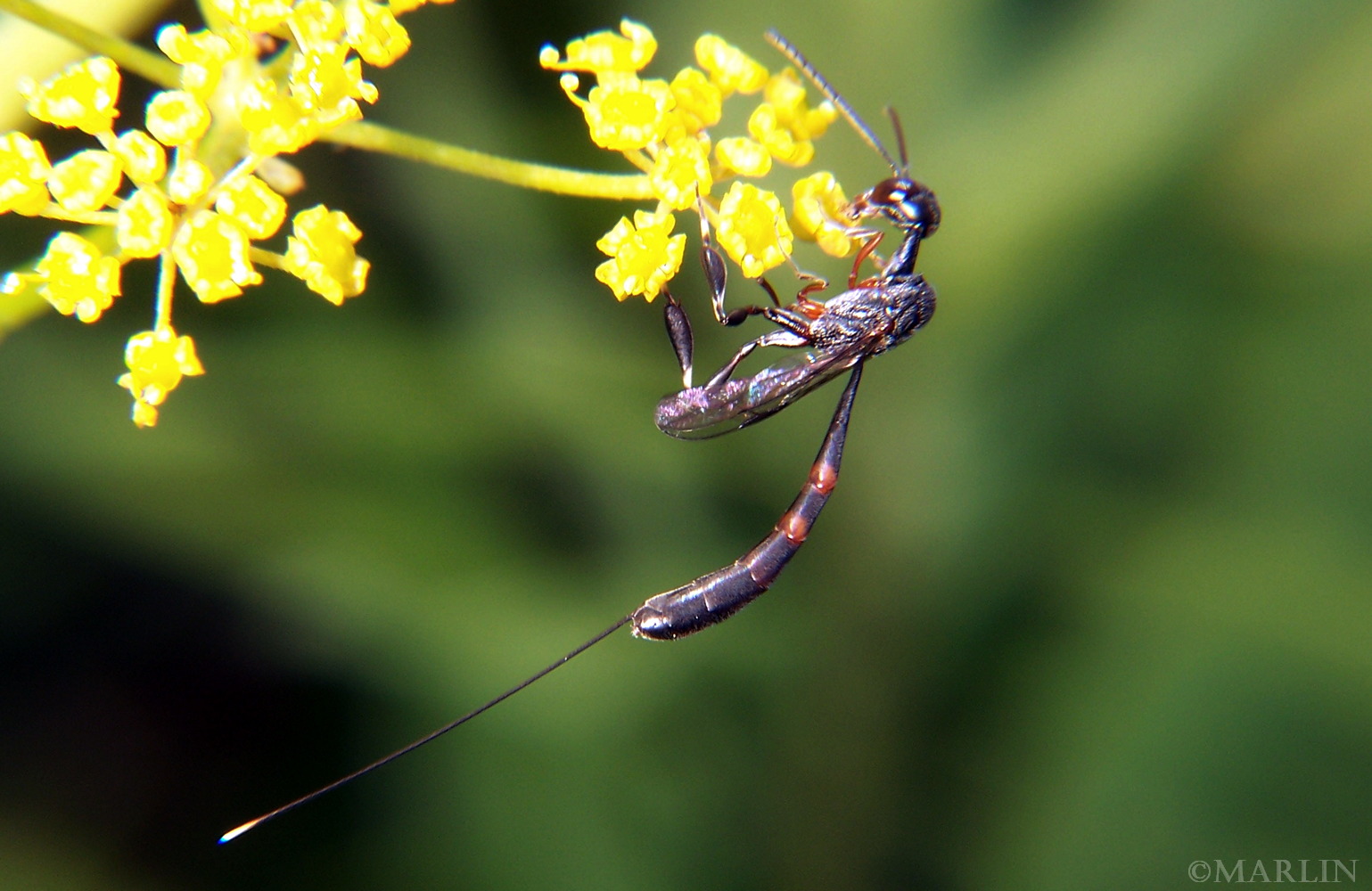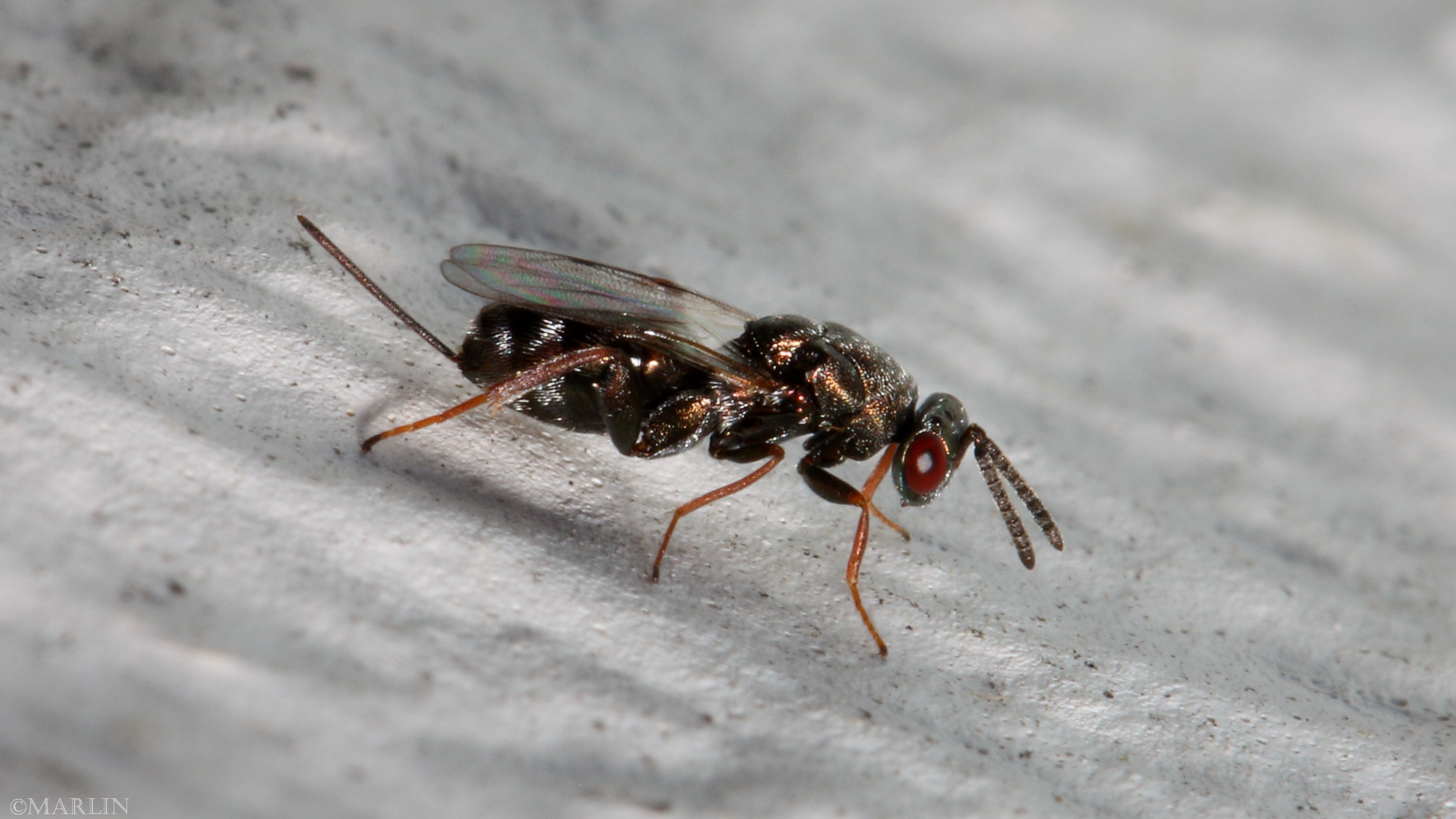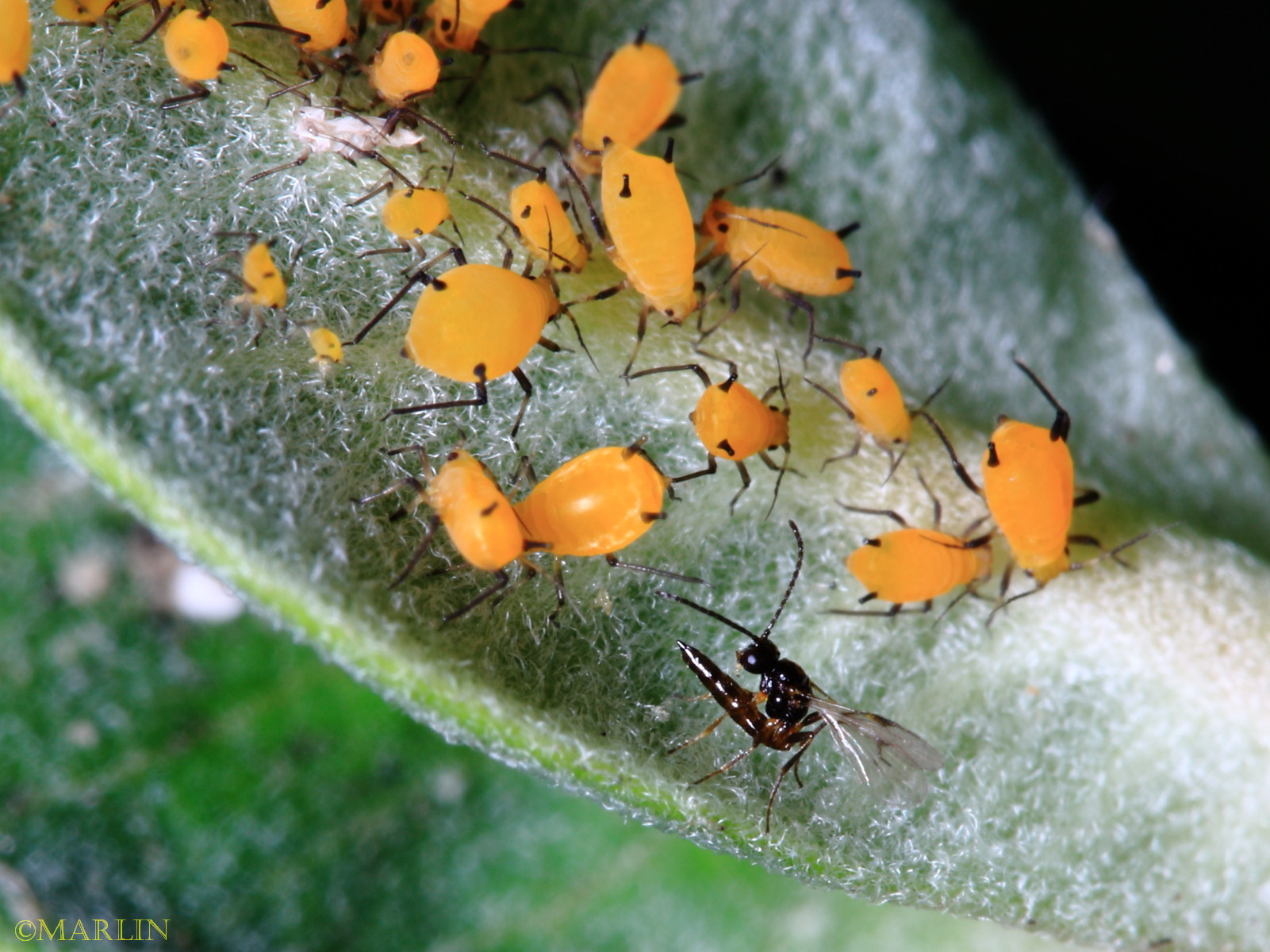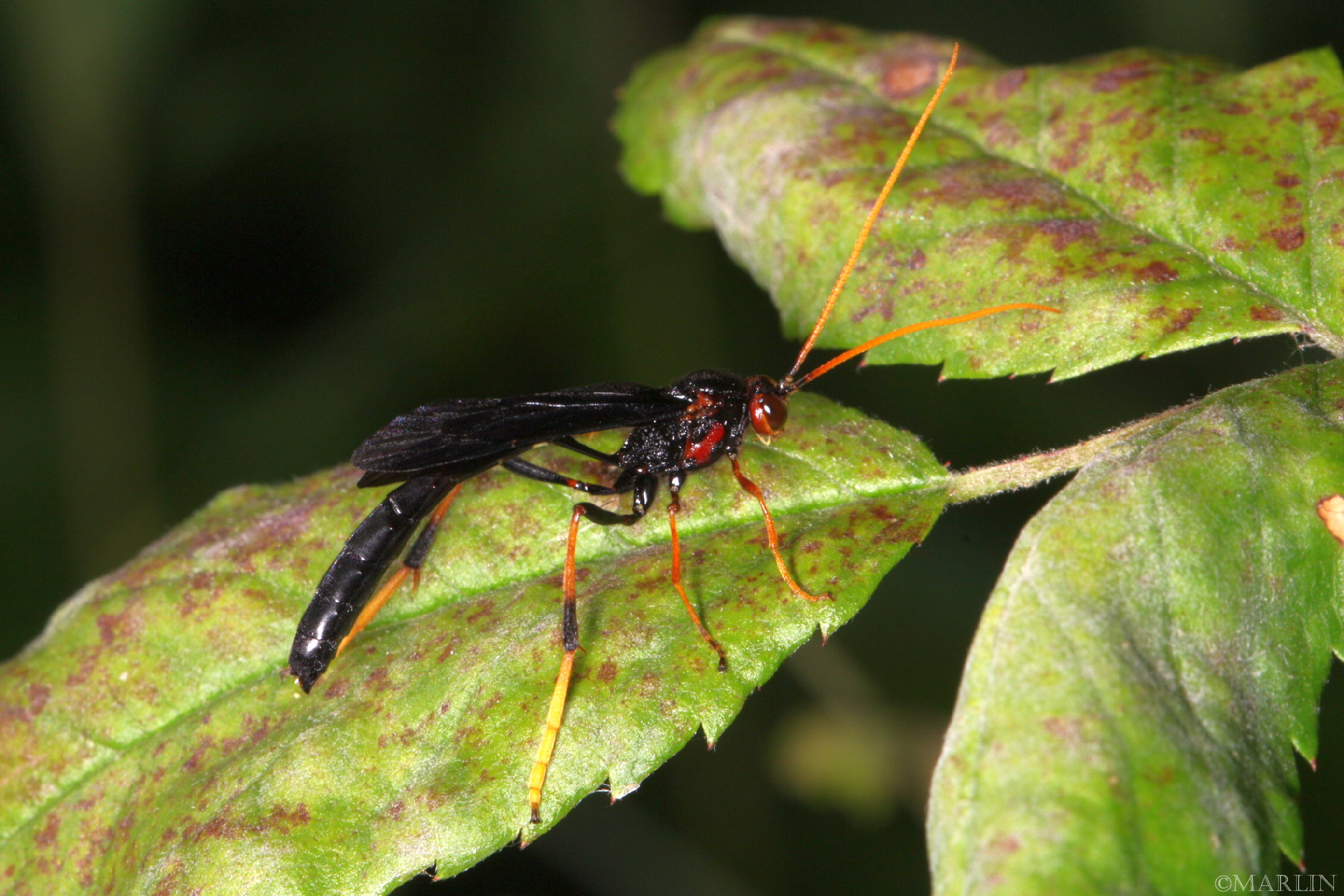Parasitica – Parasitic Apocrita
This female wasp is fully 4 inches long, including ovipositor. Find a detailed photo series: Megarhyssa
Includes Hymenoptera Superfamilies Chalcidoidea, Evanioidea, and Ichneumonoidea.
Live wasps photographed in the wild at North American locations
The parasitic apocrita, an artificial grouping, contains all the taxa not included in those other artificial groupings Symphyta and Aculeata. Long story short: here are the wonderful parasitoids, including the Ichneumonidae, the Braconidae, Gasteruptiidae, Chalcid wasps; Family Agaonidae, the fig wasps; Cynipidae, gall wasps, among many others. Bugguide.net has a good listing of the relevant families and superfamilies: “Parasitica.”
Tiny 5mm Braconid wasp egg-laying
The parasitic Hymenoptera are a highly successful and important group of insects comprising probably over a million species. Despite the vast amount of research that has been carried out on the group over the last 100 years or so, there are still many unexplained aspects of their biology. In recent years interest in the parasitic Hymenoptera has grown as a result of the increasing demand for biological methods for pest control and their possible use as natural enemies. Parasitic wasps are also tremendously important in research on pollution dynamics and on host-parasite interactions.
Ichneumonidae alone accounts for 4700 recognized valid species, making it the largest family of North American insects [3].
Ichneumon wasps are important parasites of other insects. Common hosts are larvae and pupae of Coleoptera, Hymenoptera, and Lepidoptera. There are approximately 3,000 species in North America – more than any other Hymenoptera family. One way they differ from the wasps that sting (Scolioidea, Vespoidea and Sphecoidea) is that the antennae are longer, usually with 16 or more segments.
Female ichneumons frequently exhibit an ovipositor longer than their body. Ovipositors and stingers are analogous structures; some Ichneumons inject venom along with the egg, but they do not use the ovipositor as a stinger per se. Stingers are used exclusively for defense; they cannot be used as egg-laying equipment. Males wasps do not have stingers or ovipositors.
In some species of Ichneumon wasps, both sexes will wander over the surface of logs, tree trunks, and even grass stems tapping with their antennae. Each sex does so for a different reason; females are ‘listening’ for host larvae upon which to lay eggs, males are listening for newly emerging virgin females with which to mate. Upon sensing the vibrations emitted by such insect larvae, the female wasp will drill her ovipositor into the substrate until it reaches the cavity wherein lies the larva. She then injects an egg through the hollow tube into the poor unfortunate’s home (sometimes inside the larva itself). There the egg will hatch and the resulting larva will devour its host before emergence. If you happen across one at work, approach slowly and carefully. It’s a fascinating process.
Gasteruptid Wasp – Gasteruption species
Superfamily Evanioidea – Aulacids, Ensigns, and Gasteruptids are predator-inquilines that lay eggs inside the cells of solitary bees and wasps nesting in plant stems or in underground nests, with the resulting larvae feeding on the food stores and/or nest inhabitants. The ovipositor on this female wasp is not used for drilling into wood, as in some other parasitic wasps (see Megarhyssa), but is used as a sort of remote placement device; the wasp inserts it into an existing nest or burrow. The Tree of Life Web Project has a thorough write-up on these curious insects.
Adult Gasteruptiidae wasps feed on flower nectar, and at least some are believed to eat pollen as well. I found these very slender (imagine an insect almost as thin as a darning needle) voraciously nectaring at wild parsnip, sharing the nectar source with various tachinid flies, beetles, lady beetles, ichneumon wasps, sawflies and ants. Only the female wasps were feeding – the males did nothing but follow the females around.
Superfamily Chalcidoidea is only one of the large groups of parasitoid wasps. Chalcids are usually very small, with reduced wing venation. Many species, such as the Torymidae wasp shown here, have iridescent colors or markings. Some chalcids are phytophagous, but most are parasitoids of other insects; hence are considered beneficial; some are used in biological control programs [1].
Family Chalcididae – Chalcid Wasps primarily use Lepidoptera and Diptera as hosts; a few attack beetles, other hymenopterans, or lacewings in Neuroptera [2].
Tiny 3mm braconid wasp lays eggs on aphids
As I was photographing orange aphids on milkweed, I noticed these tiny wasps (3mm) laying eggs on them. Maybe inside them? I couldn’t tell. The wasp would approach the aphids with its abdomen and ovipositor pointed / folded underneath (It was the only time she walked slowly enough that I could follow her movement), and then rush forward while extending her abdomen even farther, and give an aphid a quick poke. The poke only takes a second or two, tops. She seems genuinely intent in staying away from the aphids, although the aphids didn’t react to her presence at all, even when she poked them. None of the aphids had exuded that orange wax from their cornicles, as seen most every time aphids are under attack by lady beetles or their larvae.
I measured the aphids afterward: The smallest are 1mm and the larger ones are 3.5mm.
Subfamily Anomaloninae
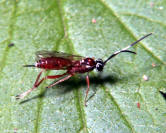 |
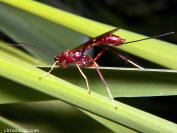 |
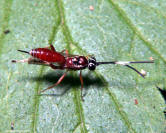 |
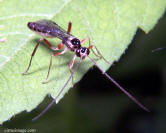 |
I very often see small Ichneumon females hunting amidst low foliage. They are maddeningly difficult to track, their movements are so frenetic. They fly rapidly from plant to plant, sometimes stopping to explore one of the leaves in detail, and this is when a photographer must be ready to quickly approach and take the shots as quickly as possible. (Good practice for any insect photograph, I guess). Many of the pictures here were taken with a couple old Kodak point-and-shoot cameras – that made it much easier because all I had to get close to the subject was my hand holding a camera, and not my head and face and huge lens, like I do now (with a DSLR).
References
- USDA, Systematic Entomology Laboratory, “Chalcidoids“
- Bugguide.net, “Superfamily Chalcidoidea – Chalcid Wasps“
Insects & Spiders | Bees & Wasps Index | Bees & Wasps Main | Bee Flies | Robber Flies
Tree Encyclopedia / North American Insects & Spiders is dedicated to providing family-friendly educational
resources for our friends around the world through large images and macro photographs of flora and fauna.

